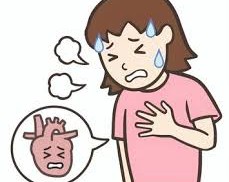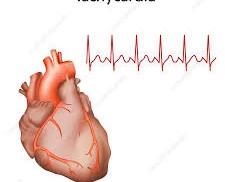Tachycardia: Understanding and Managing a Rapid Heartbeat


What is Tachycardia?
- Tachycardia is a condition where the heart beats faster than normal, even when the body is at rest.
- A healthy heart usually beats between 60 to 100 times each minute. I
- n tachycardia, it often goes above 100 beats per minute.
- This fast heartbeat can sometimes feel like the heart is racing, pounding, or fluttering in the chest.
- Some people may not notice symptoms, while others feel lightheaded, dizzy, or short of breath.
When the heart beats too fast, it may not pump blood efficiently. This means the body may not get enough oxygen.
Why Does Tachycardia Happen?
- Stress and anxiety can trigger a faster heartbeat.
- Too much caffeine or alcohol can affect the rhythm of the heart.
- Certain medical conditions like thyroid problems, heart disease, or lung issues may also cause it.
- Dehydration or loss of electrolytes can play a role.
The reason behind tachycardia is different for everyone, but knowing the trigger can help in controlling it.
Common Signs and Symptoms
- A pounding or racing heartbeat
- Feeling dizzy or faint
- Chest tightness or discomfort
- Shortness of breath
- Fatigue or weakness
These signs may appear suddenly or develop slowly. Some people feel them strongly, while others may not notice until checked by a doctor.
When Should You Worry?
- If the fast heartbeat happens often without a clear reason.
- If it comes with chest pain or pressure.
- If you feel faint or lose consciousness.
- If the symptoms interfere with daily life.
A fast heartbeat once in a while may not be dangerous, but regular or severe episodes should not be ignored. Medical advice is important.
Lifestyle and Natural Approaches
- Reducing stress with relaxation techniques like meditation or deep breathing.
- Staying hydrated and balancing electrolytes.
- Avoiding too much caffeine, alcohol, or smoking.
- Getting enough rest and regular exercise.
Healthy daily habits can sometimes reduce the frequency of tachycardia episodes.
Medical Help and Treatments
- Doctors may run tests like an electrocardiogram to study the rhythm of the heart.
- Treatments depend on the cause, which may include changes in lifestyle, medical therapy, or special procedures.
- The goal is to slow the heart rate and improve its regular rhythm.
Proper treatment helps protect the heart and reduces risks of other health problems.
Role of Inderal (Propranolol) in Managing Tachycardia
Inderal, known as Propranolol, is often used by doctors to help manage tachycardia. It works by slowing down the heart rate, allowing the heart to pump blood more efficiently. This medication is especially helpful for those whose tachycardia is linked to stress, anxiety, or certain medical conditions. Doctors usually decide the correct dose and monitor progress carefully. When used under medical supervision, Inderal can bring relief and help patients feel more stable.
Long-Term Care with Inderal (Propranolol)
- Inderal not only controls heart rate but can also prevent future episodes.
- It is sometimes part of a long-term plan for people who have frequent tachycardia.
- Patients often notice less palpitations, fewer dizzy spells, and improved quality of life.
- Along with healthy habits, medication can bring strong and lasting results.
By combining medical therapy with lifestyle changes, people with tachycardia can live healthier and more active lives.
Living with Tachycardia
Tachycardia can feel frightening, but it is manageable. With awareness, lifestyle changes, and medical support, most people can control the symptoms effectively. For some, medication like Inderal may be part of the solution. The key is to work closely with healthcare professionals, follow advice, and keep track of symptoms. With the right steps, living a balanced life with a healthy heart is possible.
Drug Description Sources: U.S. National Library of Medicine, Drugs.com, WebMD, Mayo Clinic, RxList
Reviewed and Referenced By:
- Dr. Sarah Thompson, MD
Cardiologist and clinical researcher focusing on heart rhythm disorders. Contributor to educational resources on heart health and patient safety for the National Library of Medicine.
- Dr. Alan Carter, PharmD
Clinical pharmacist specializing in chronic pain management and antiepileptic drugs. Frequently cited on Drugs.com for reviewing therapeutic guidance on medication safety and pharmacokinetics.
- Dr. Emily Johnson, MD
Pediatric specialist with focus on infectious diseases and childhood conditions. Regular contributor to WebMD articles, providing trusted medical insights and treatment guidance.
- Dr. Laura Mitchell, MD
Internal medicine physician with expertise in cardiovascular health and preventive care. Contributor to Mayo Clinic’s patient health publications, explaining treatment options in simple language.
- Dr. Michael Rivera, PharmD
Expert in antibiotic therapy and drug safety, often referenced on RxList for his professional reviews on medication effectiveness and safety guidelines.
Article Post: Editorial Team of RXShop.md
(Updated at Aug 27 / 2025)

